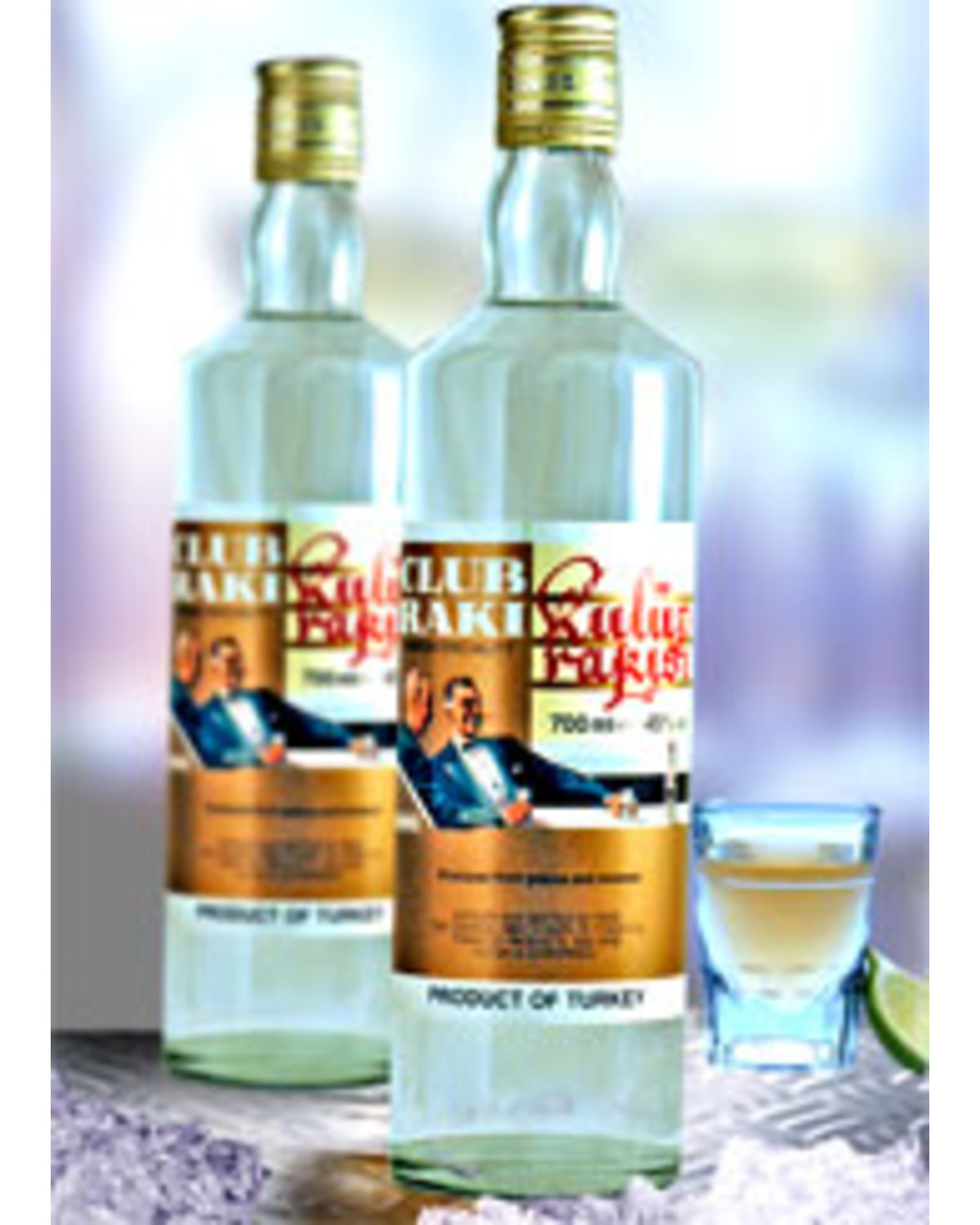
Tekel Club Raki (700ml)
When one thinks of Turkey, one is reminded of Raki. Raki is made from different fruits in different regions , but grapes, figs and plums are the main components. In the Near and Middle East countries the drink is known by different names including Araka, Araki & Ariki. Some claim that its title is derived from the word "Iraqi" because it was first made in Iraq. Another theory is that Arak in Arabic means "sweat" and similarly araki, "that which makes one sweat." (If one drinks too much Raki one does indeed sweat!) More likely, the connection stems from observations of distillation, as the spirit falls drop by drop like beads of sweat during the process. To complicate matters further, in neighboring countries different kinds of Raki have different names. In Greece, gum is added to it and the drink is called "Mastika". Duziko which comes from the slavic word "Duz" means Raki with aniseed. In Turkey, Raki made from grape residue used to be called Düz Raki or Hay Raki. Today,Club Raki is produced from grapes and aniseed and tastes more-or-less like a strong ouzo. 45%Alc./Vol.
More about Raki...size> In recent history, Raki has been produced from the residue of grapes left over from wine making. When a shortage of residue started, spirits from abroad were imported and processed with aniseed. This went on till the First World War when, for want of raw materials raisins were used in the production of raki and sometimes even dried figs and mulberries. For good quality Raki, seedless raisins and aniseed in Cesme (Izmir ) were preferred. As the raki industry developed, aniseed agriculture grew and developed with it. When alcoholic beverages were prohibited at one time, underhand producers lost no time in taking steps. The administrative authorities, especially in small towns, turned a blind eye to the illegal production of raki so long as it was made in accordance with the technical rules. In many houses meat grinders were used for mincing the raisin, large basins formerly used for daily washing were now used for fermenting the grapes and oil cans were converted into distilling apparatus. The raki which was usually without aniseed and which often contained materials harmful to health were distributed by children in the evenings, when the streets were no longer crowded.
Today in Istanbul , drinking Raki has its own traditional rituals. Most important is what it is to be partaken with. White cheese is the main and unchangeable "meze" of Raki. Raki is usually drunk with cold dishes like tomatoes, cucumber, lettuce and seafood. Fish is also a favorite, especially mullet and mackerel. Due to the aniseed it contains, Raki changes colour and becomes a milky white when water is added and a glass of pure water to go with it gives a distinct pleasant taste. Istanbul used to have many tiny taverns but nowadays if you want to drink Raki and eat dishes that go well with it the best places are Kumkapi, the Bosphorus and the flower market in Galatasaray. The favorite mezes of Raki drinkers, roasted chickpeas and freshly salted almonds, can be found in almost all taverns.
- Supplementary notes sourced from www.allaboutturkey.comsize>
to most of Australia
